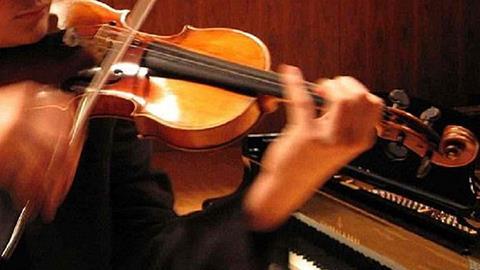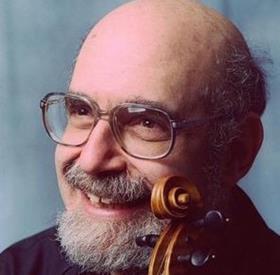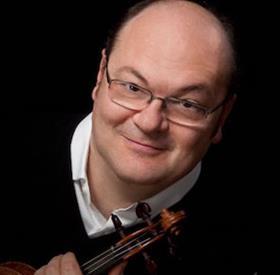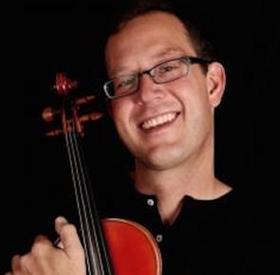We asked four string pedagogues to give their thoughts on eliminating or cutting down on excessive body movements when playing


Roy Sonne: I agree that excessive movement can misdirect your energy. It can also be a turn-off for the audience and for fellow players. It can be a hard habit to break, because it is probably strongly ingrained. I would recommend working with a mirror. You can start out just playing open strings, using the whole of the bow and finding your most beautiful, pure tone. Move only what is necessary – forearm and upper arm, with some flexibility in the wrist and fingers.
Ensure there is no movement of the violin, head, torso or anything else. Keep watching yourself in the mirror: you may be surprised at how good it sounds. Then play a scale that way, again using whole bows and one note per bow. It can take a while to get comfortable with this.
The next step is to play a slow, easy piece, perhaps the slow movement of a Handel sonata. Make it gorgeous: give shape to the phrases and put character and intensity into the music, but just with your bow and fingers. Keep watching yourself in the mirror, and little by little you can start moving up into more difficult repertoire. Have patience and focus on how it sounds, not on how you feel.
Roy Sonne was a member of the first violin section of the Pittsburgh Symphony for 28 years. He now devotes himself to teaching and solo playing.

Philippa Bunting: Playing a stringed instrument is naturally a physical process, and feeling the music in one’s body is an essential part of the process of realising it — ask any Dalcroze teacher. However, when that movement becomes excessive it can detract from the sound: the energy that needs to go into the string, and into strong left-hand finger action, is lost elsewhere in the body. This is probably what led to your teacher voicing a concern.
Three things occur to me straight away. One is that some of your playing movements might be unbalanced: you could be making gestures that are contrary to the body’s natural ones, thereby forcing other parts of the body to move unnecessarily. For example, sometimes players fall into the trap of thinking that the bow moves in an actual, rather than a notional, straight line, and this can result in all sorts of displacement actions when changing bow. Working with an Alexander teacher could help here. So might looking at the work of Paul Rolland, who studied this area extremely closely.
The second is that you may be trying to express musical meaning through gesture before you get to the string, rather than focusing on what happens when you’re there. Feeling musical is not always the same as sounding musical, and although it can seem inhibiting to play while trying to keep your body still, it can often improve the sound. Focus intently on the point of contact, and use your eyes as well as your ears to help you. Videoing yourself, using equipment with high-quality audio capture, could be really useful.
Finally, check your posture and the set-up of your instrument, particularly chin and shoulder rests. A good deal of unnecessary movement can come from constant tiny adjustments to make the instrument comfortable, particularly as you shift, and paying attention to this might also reap considerable dividends.
Philippa Bunting is a senior lecturer in music education at the Royal Northern College of Music in Manchester, UK, and also works as a freelance music education consultant.

Arik Braude: If the overall musical result is truly convincing, I think that most teachers are likely to take an ‘if it ain’t broke don’t fix it’ view, and readily overlook excessive bodily motion. After all, this is only a part of a larger picture, which is your complete performance. If these non-essential movements are genuine and come as a result of intensely felt emotion, in combination with a musically convincing and technically polished performance, they may in fact improve the audience’s impression.
Conversely, if they are sincere and natural but come at the expense of correct technique, the issue must be addressed. You might try to substitute your excessive, uncontrolled movements with some controlled ones (which may also improve sound production). Many years ago, Isaac Stern showed an overly enthusiastic 13-year-old violinist how to move in a controlled and sound-enhancing way while playing: move your body ‘towards’ your bow when playing an up bow, and away (back) from the bow when playing a down bow.
With a little bit of discipline (as well as a mirror), these controlled contrary motions could replace a player’s uncontrolled, and sometimes unpredictable, body movements.
You can also try channelling the extraneous energy into the floor to achieve a sense of grounding. Put your feet firmly on the floor, bend your knees slightly, relax your shoulders and breathe out from your diaphragm. This grounding technique might help eliminate the excess motions.
Remember that various body types have different requirements to achieve physical balance and comfort in playing. For example, short and broadly built players will naturally require less movement than the tall, lanky type when it comes to keeping their balance while playing. If the basic set-up and posture are not optimal for the body type, excessive body movement may result.
Finally, remember that technical know-how and the ability to achieve your goals efficiently can greatly reduce the need for unnecessary movement. For our artistic growth, it is crucial to question and challenge ourselves constantly as violinists, and as musicians.
Arik Braude teaches at the Aaron Copland Conservatory of Music at the Queens College, City University of New York, and at the Mannes College of Music preparatory division in New York, US.

Brian Lewis: Excessive body movements in classical performance can greatly detract from the intended musical message of the performer. Although it is important to have freedom of motion to help with the release of tension, this does not mean you should be a dancer on stage. Do not attempt to eliminate motion, but try to control it.
A good place to begin is to analyse which extraneous body movements affect your playing, and when they happen. Think about the contact of your feet with the floor. Envision giant tree roots growing from your feet into the ground, making you feel anchored. Keeping your feet planted will help with excessive twisting: you want the strength of an oak and the flexibility of a willow. Then be sure your violin is well balanced on your left side. Focus your energy on keeping the plane of the violin from moving back and forth, or up and down. To have a visual reminder of your goal, draw a target with a bull's eye on a piece of paper and tape it to the wall, at the level you want the position of your scroll to be. As for ways to avoid 'over-bowing', exercises for bow divisions can increase your control. I carry in my violin case a piece of soft white chalk, which I use to mark on my bow the quarter, half and three-quarter marks before I practise my bow divisions during scales. Again, you are giving yoursel a visual reminder of how to control your bow more effectively. Focus on the details and you will move your attention from big gestures to little gestures. Greater accuracy and precision will be your reward for the economy of excessive movement. Learn to dance with your bow, not your body.
Brian Lewis is an international soloist and violin professor at the Butler School of Music in Austin, Texas, US.
This is an edited version of an article first published in The Strad's November 2014 issue
































No comments yet